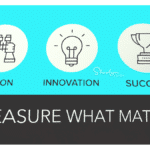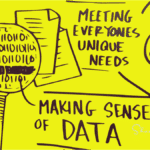I’m a firm believer that you should have a resume. And it should always be ready at a moment’s notice. You never know when you might get a call about a dream job. Or frankly, any kind of opportunity – resumes are so much more than just a job-hunting tool.
But when it does comes to job search, the resume rules we’ve heard for years might not be relevant anymore. The reason – applicant tracking systems (ATS). This technology helps organizations streamline the hiring process by scanning for resume keywords such as position titles, dates, skills, etc. It allows for faster processing, so recruiters can spend their time connecting with qualified applicants.
This infographic from HireRight shares some tips for creating an ATS friendly resume. I thought their advice about the one-page resume was spot on. Be sure to check out some of their other formatting suggestions at the bottom of the graphic.








Lawyer says
This is a really nice resource. You should create a .PDF version for download and display an embed code incase people want to embed this graphic on their website. Let me know if you need any help with that.
Lawyer
Edith says
“Don’t submit a PDF”?
Really? What else? You don’t mean to suggest word, do you? Why should I give you my resume in a format that you can edit?
(Actually, my resume is formatted in LaTeX – makes it easier to adapt it to different employers and gives a great, structured layout. And of course, it translates to PDF – after all, “PDF” means “portable data format” and should be THE standard for file exchenge.)
“some candidates spend as little as 50 seconds reading job descriptions”
Well, if you take a look at job descriptions, it seems that employers spend even less time generating them – they just use and re-use their old laundry lists of qualifications. No wonder they get that much unsuitable candidates.
I’ve been loosely scanning the job ads in recent years, and for me, it always comes down to this: why should I want to work for an employer that shows me through his job ad “I don’t care for my employees – you are just a worm and can feel lucky if I deem to notice you”?
Ed Danielski says
Sharlyn – Left you a comment elsewhere as well. But I think this is really valuable stuff to an applicant. But, as a said elsewhere, it is what a resume always was and what is should continue to be. Unfortunately, too many “gurus” out there tell you to submit a snappy video resume with singing hamsters and your own uniquely designed font and graphics. Less than 1% of the world’s employers would think that was cool. Everyone else wants a standard resume that fits their niche and is easy to read.
No offense there Edith, but you are like many applicants. You can persist in sending your PDF, but you limit your chances of employment. The employer is running the show, so if they want a word document to parse up your qualifications, it is their sandbox and they make the rules.
Sharlyn Lauby says
Thanks for the comments! This infographic has really sparked some good conversation.
I agree with Ed that employers think they are running the show when it comes to hiring. Although I’m not sure how long that will last. With the demographic changes in the workforce and the skills gap, it’s possible candidates will take control of the process in the near future.
That being said, I want to respond to Edith’s comment about editing resumes. While I understand that the possibility exists, I don’t know why any recruiter would alter a candidate’s resume. More importantly, when a resume gets an average 6.25 seconds of review, I really doubt they have the time.
Edith says
So, you state that employers take 6.25 seconds per resume, but complain about applicants taking 50 seconds per ad?
Do the math…
And please: don’t complain about “labour shortage” in engineering. IF there was a labour shortage, employers couldn’t take that approach to applicants.
As I see it: it’s YOUR loss if I can’t apply to your company.
Edith says
Let me try to explain my view with an image.
I see HR as fishermen – they try to catch the best fish (= employees) available.
So how do you get the best fish?
– Go where the fish are
– Use bait appropriate to the kind of fish you want to catch
– Use a net or fish trap that is attractive to the fish and lures them in.
Seeing this infographic, it seems to me that what you are doing instead is yelling at the fish ’cause they are too dumb to jump into your net.
(Meaning “you” in a general way, not any specific person.)
Sorry for writing that much comments, but the topic really gets to me. Though maybe the situation in general is a bit different in Germany (less automatic sifting of resumes, but also even more generic job ads, and more complaining about labour shortage).
Sharlyn Lauby says
Hi Edith. Thanks for the comments. It’s good that you’re passionate about the topic.
Here’s what I see from a recruiting perspective: A company posts an open job. Hundreds of people apply. Literally. That’s a good thing, the company wants lots of qualified people to apply. But the company also has to figure out an efficient way to review all those resumes. After all, the company can’t hire 20 more people to process resumes – it adds too much to the acquisition cost. That’s where applicant tracking systems come in.
So to help candidates get noticed in the applicant tracking system, they might want to make a few adjustments in their resume. But, you don’t have to. In fact, an applicant can do whatever they want. My goal is just to give some tips to help. That’s all.
Edith says
Hi Sharlyn,
I understand the need to keep aquisition cost low. What I don’t understand is why companies don’t make it easier for applicants to check fitting by writing good job ads.
When I write an application, it costs me about 2 hours – at least. I try to match my capabilities to the companies requirements and show my worth to the company, I select the matching set of certificates and so on. This is not easy when the job ad is some generic jumble, no clear format requirements are given and sometimes even the communication path is obscured. (And you can’t count on a general applicability of “standard” resumes – standard depends on the country, the field where you apply, and even the company itself. For example, in the US, most consultants say you should not give a photo – in Germany, an application without a photo would get sorted out.)
So, as I am a highly qualified engineer, my time is valuable and I select very carefully how I spend it – meaning, I don’t apply to companies that make it hard for me. Others may not share my constraints – but I’d bet that the more a company relies on (badly) automated application processes, the more the applicants shift from high potential to “I just need any job”. So in the end, the automated application process just reduces the quality of the applicants – which is not the intended outcome (at least, I hope so).
It’s a bit like search engines – first, people learn to “cheat” the rating mechanisms, and in the end, you only see what the machine thinks you expect. The mechanism disadvantages people with uncommon vitas and narrows the field to mainstream – cutting off both low and high ends of the bell curve.
Widening the view (and I know I’m getting a bit philosophically on the topic), I think that narrowing the field of applicants has put companies where they are now – in a crisis, doing the same things over and over and expecting different results.
To end on a more positive note – I’ve been reading your blog for a while now and I appreciate your comments and insights.
Sharlyn Lauby says
@Edith – Thanks for the kind words. As a human resources professional, I’m just trying to be helpful.